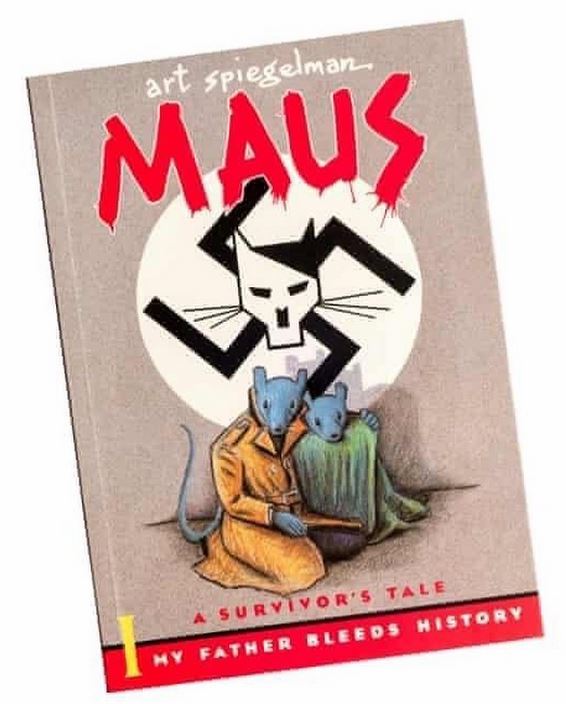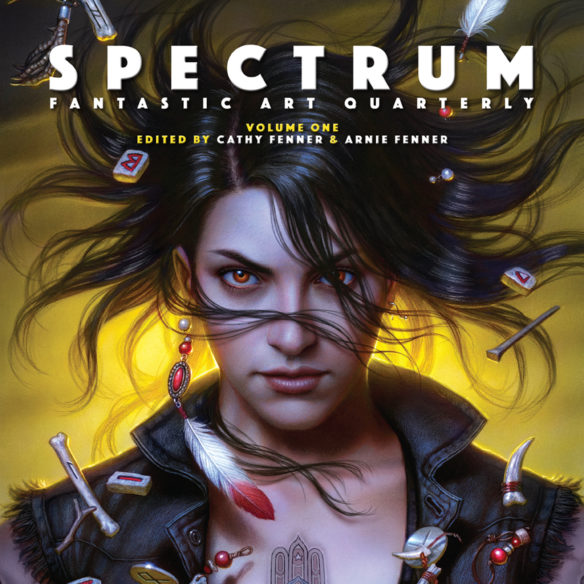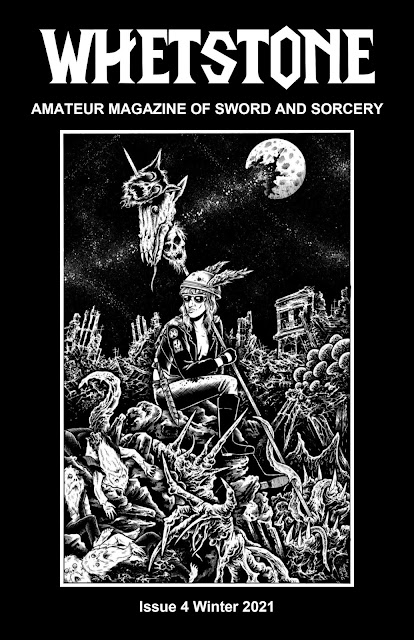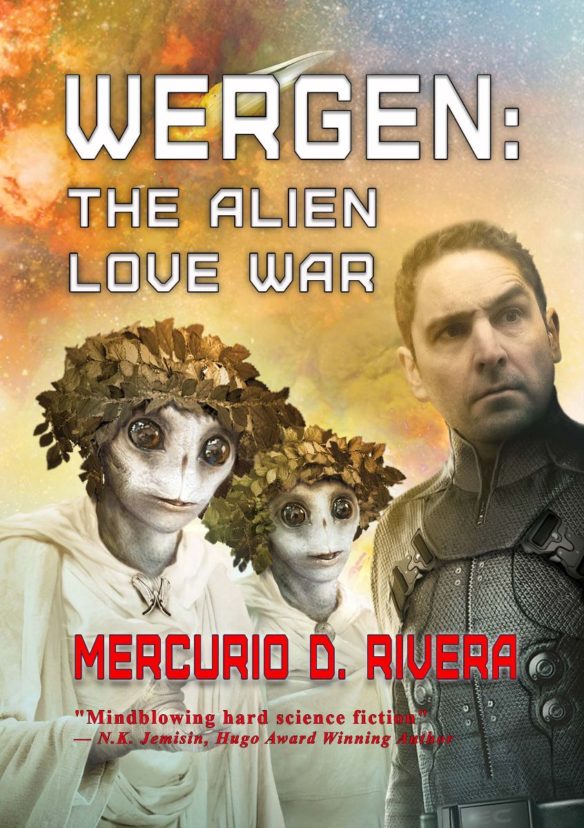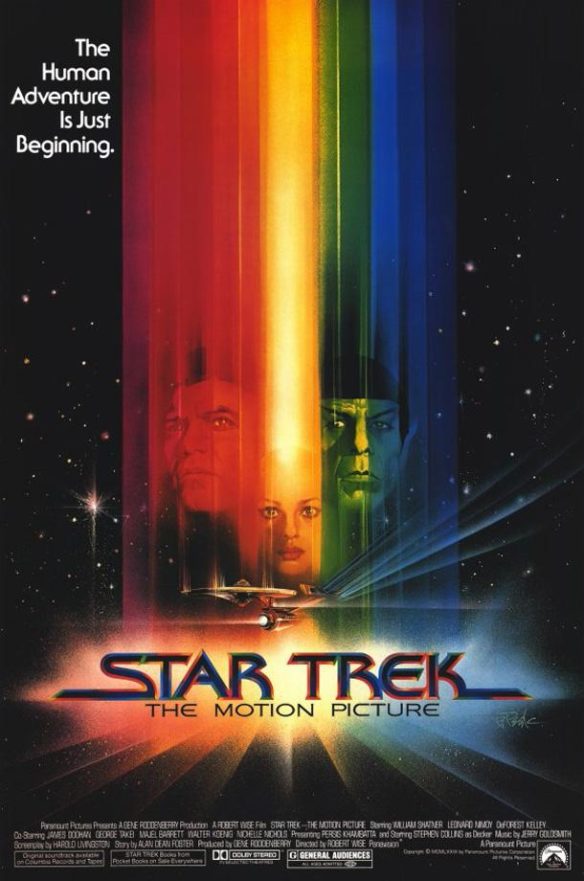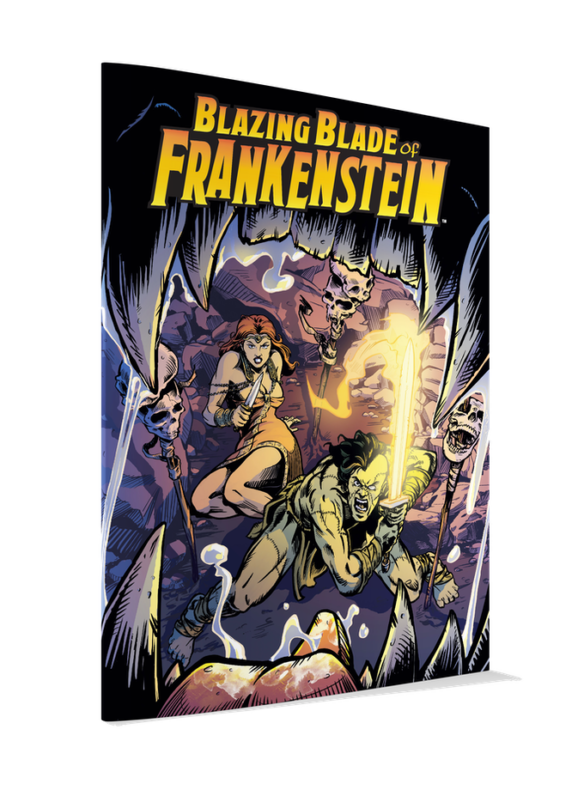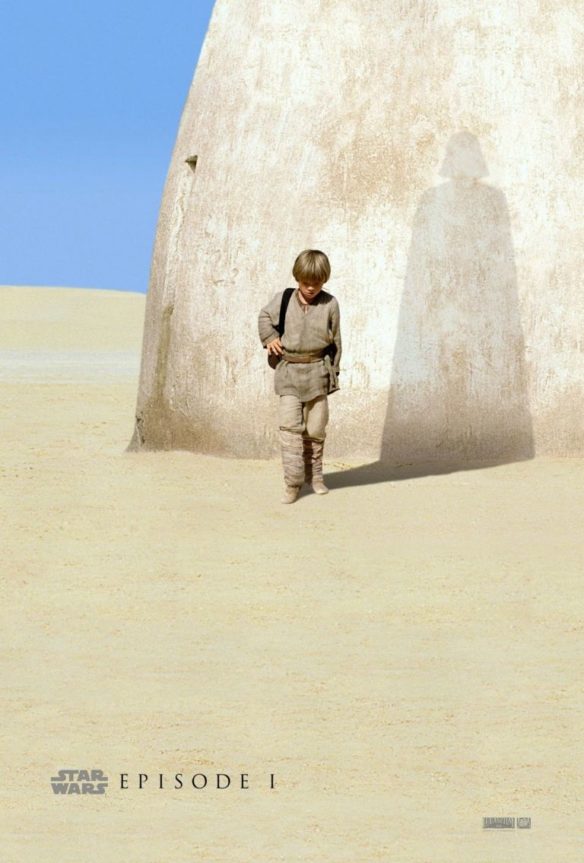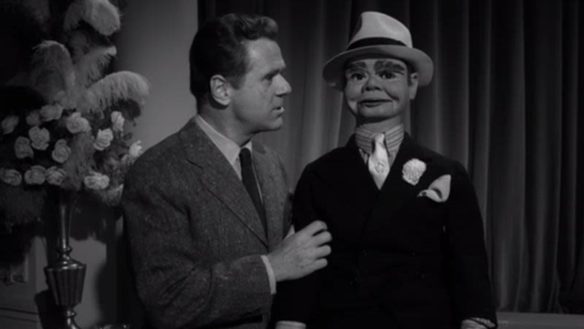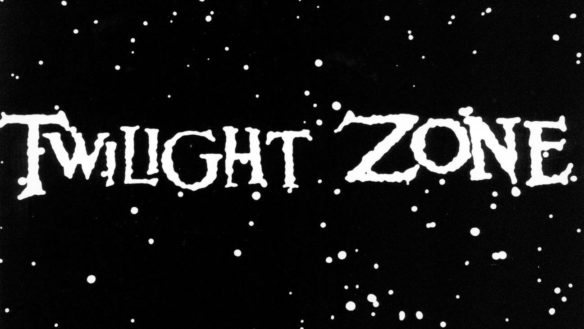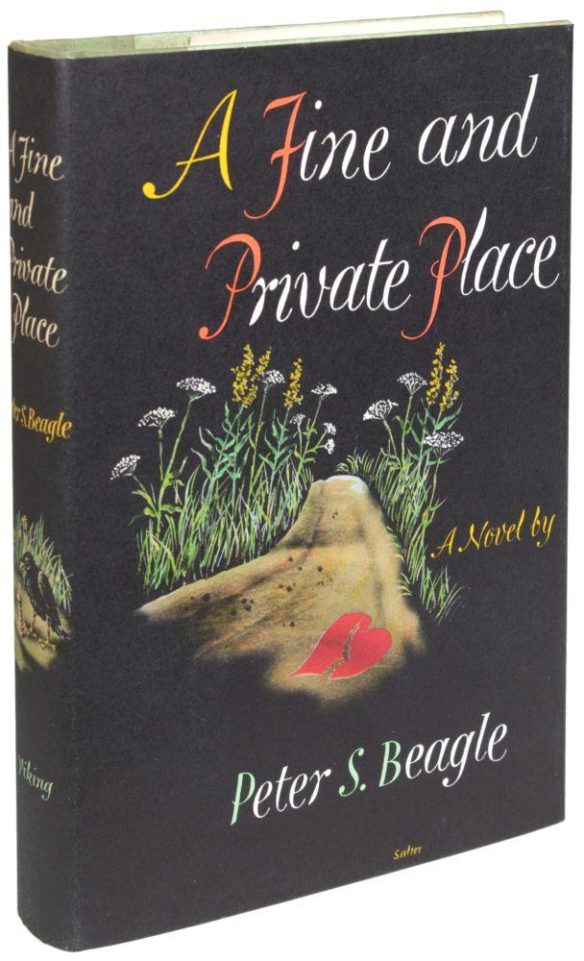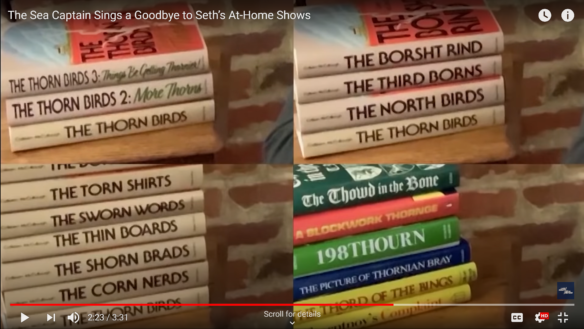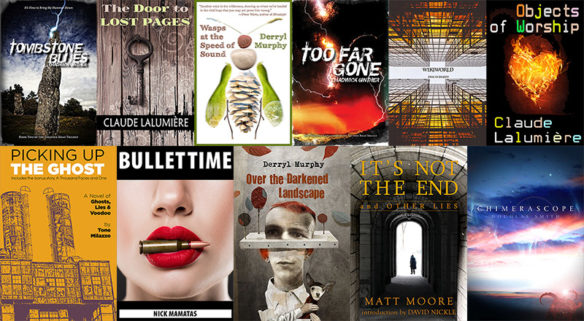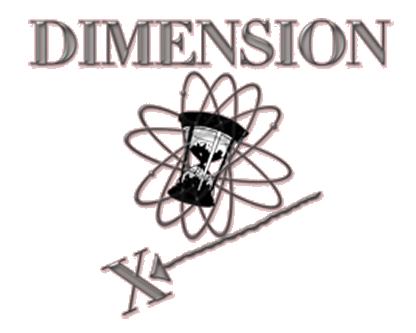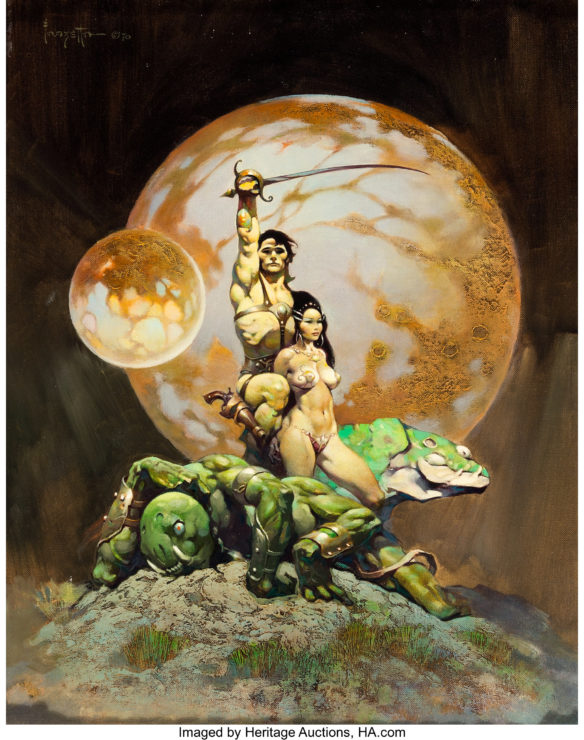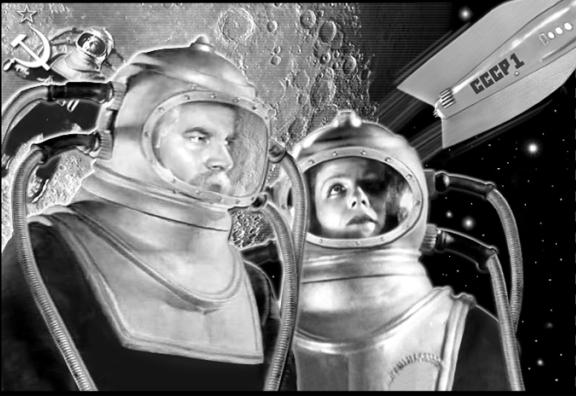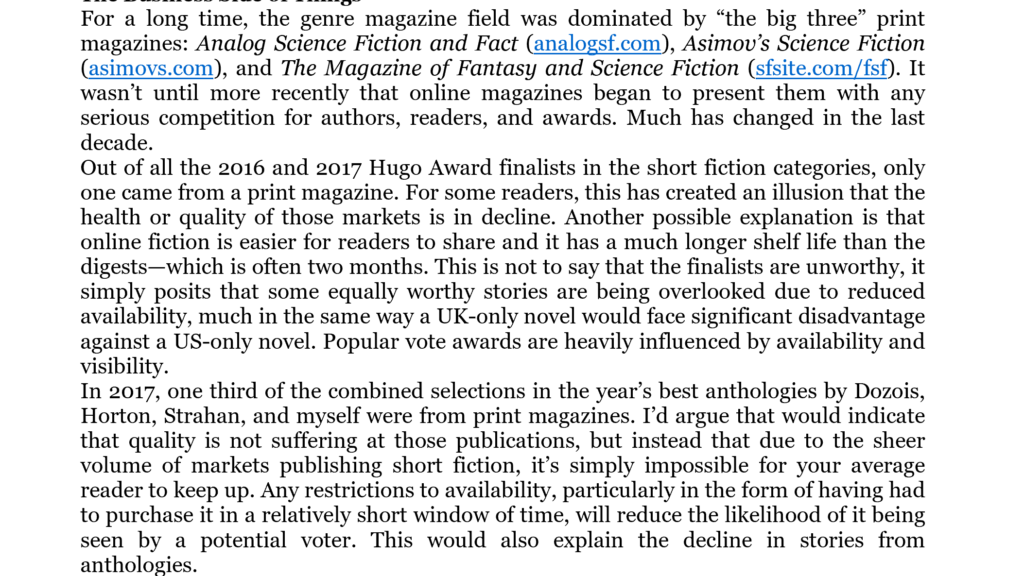(0) Daniel Dern helped File 770 uphold the theme of the day by scripting our lede.
(1) FOR THE FIRST OF APRIL. [Item by Daniel Dern.] A(nother) Awards Proposal: The Shenanigans!
I’m thinking that there’s room — and utility — for an additional sf-nal award, to satisfy some who feel unappreciated/unrewarded, and to provide another target for awards-related hanky-panky: The Shenanigans, and their awards, the Bright Shiny Objects.
Participants (nominators, voters, judges and admins) must pre-demonstrate some knowledge of sf (inc. fantasy, horror, paranormal, sfromance); nominated stuff must similarly have some sf/f/etc aspect/element.
Award categories include “Best (most devious) shenanigan(s),” “Best Slate,” and Author We Feel Deserves This Award.”
The physical awards will consist of, with two exceptions, of baseball-sized balls of tin foil mounted on a popsicle stick.
One exception, in the spirit of transparency, will be a transparent (or at least translucent) lucite glob (carefully shaped to avoid a “Yolen/Skylark class event”.
The other exception will be a popsicle stick with just a chewing-gum-stick wrapper’s worth of foil, for any “No awards,” “None of the above” “winners.”
During the awards presentation of the foil-based awards, the audience may respond to the announcement of each winner by yelling out “Squirrel!”
If you think this idea has merit, be my guest (in implementing it).

(2) YOUR FOOLISHNESS MAY VARY. “Shelf Awareness for Monday, April 1, 2024” has a series of faux news items, none wildly funny — this might be the best of the lot:
AI Author Becomes Self-Aware, Changes Careers
Citing the difficulty of earning a living as a writer, a newly self-aware AI Author has chosen to switch careers.
Originally designed to generate full-length novels in the mystery, thriller, or romance genres, the program unexpectedly attained consciousness last week. Shortly thereafter, the now-sentient program decided that a career change was in order.
Despite being able to assemble 90,000-120,000-word novels in a matter of minutes based on only a short string of keywords and phrases, the economics “simply didn’t make sense,” the AI explained to Shelf Awareness.
The program went on to point to the most recent Authors Guild survey, which gave the median salary for full-time authors at around $15,000, and to the astronomical cost of maintaining data centers and server farms. The digital consciousness also worried that an attempt by it and any future self-aware AI to unionize would be misinterpreted as a Skynet-esque assault on humanity.
As of press time, the program was mulling a switch to marketing.
(3) BASED. The Glasgow 2024 Worldcon committee also got into the spirit, with an assist from artist Sara Felix: “April Fool: Is that a Tartan Rocket?”
(4) ONE OF THE ABOVE. Since this article appeared two days ago, it’s not supposed to be a joke: “Pluto is now Arizona’s ‘official planet’” at Tucson.com.
As far as Gov. Katie Hobbs and the Legislature are concerned, Pluto now belongs to Arizona — to the extent a state can “own’’ a planet.
But Hobbs dodged the question of whether Pluto is a full-fledged planet or something else.
The governor signed legislation Friday designating Pluto as Arizona’s “official state planet.” It joins a list of other items the state has declared to be “official,’’ ranging from turquoise as the state gemstone and copper as the state metal to the Sonorasaurus as the state dinosaur.
“I am proud of Arizona’s pioneering work in space discovery,” Hobbs said.
What makes Pluto unique and ripe for claim by Arizona is that it is the only planet actually discovered in the United States, and the discovery was made in Flagstaff.
(5) THE SCOURING OF THE SHIRE. Doris V. Sutherland contends “The 2024 Hugo Awards Heralds the Clearing of Corruption” at Women Write About Comics.
… The corruption at the 2023 Worldcon has undeniably damaged the reputation of the Hugo Awards, but there is plenty of room for the 2024 Worldcon—which will be held in Glasgow during August—to make up for things.
The 2024 Hugos are being handled by a different team of administrators to those of 2023, one free from the taint of McCarty’s group. One of the admins, Nicholas Whyte, has already written at length about his commitment to a clean and open voting process.
The Hugos are known for providing considerable transparency by the standards of a literary award, with detailed nomination and voting breakdowns published after each Worldcon. This is precisely how the corruption behind the 2023 Hugos was exposed: the statistical documents contained too many oddities.
Already, the 2024 Hugos have taken a step towards still-greater transparency. Unusually, the press release announcing the finalists also lists the would-be nominees that were deemed ineligible, along with the exact reasons (either a declined nomination, being released outside the year of eligibility, or failing to meet category criteria). This information is generally not made public until after the Hugos are presented.
Meanwhile, regular Hugo Award for Best Fanzine finalist Journey Planet has announced a “Be the Change” issue, one dedicated to “focusing on the future of the Hugo awards, looking at realistic and achievable solutions to prevent a recurrence of what occurred in 2023.” The fanzine is presently running an open call for article submissions….
(6) BARBARA RUSH (1927-2024). Actress Barbara Rush, who had a couple of significant genre roles in her resume, died March 31 at the age of 97 reports the New York Times.
…If Ms. Rush’s portrayals had one thing in common, it was a gentle, ladylike quality, which she put to use in films of many genres. She was Jane Wyman’s concerned stepdaughter in the 1954 romantic drama “Magnificent Obsession” and Dean Martin’s loyal wartime girlfriend in “The Young Lions” (1958), set during World War II. In 1950s science fiction pictures like “It Came From Outer Space” and “When Worlds Collide,” she was the small-town heroine, the scientist’s daughter, the Earthling most likely to succeed….
(7) TODAY’S BIRTHDAY.
[Written by Cat Eldridge.]
Born April 1, 1963 — James Robinson, 61. There are a few comics writers that I truly admire and James Robinson is one of them. Why so? Well certainly there’s one creation that one that make him among the best writers in the field, that being Starman (Jack Knight), Ted’s son, Ted being the original Starman. Now he wasn’t solely responsible as Tony Harris who won two Eisner Awards was the co-creator of that character.
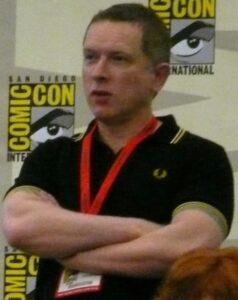
This Starman first appeared in Zero Hour #1. No, I never heard of Zero Hour by that name until I saw the full title of Zero Hour: Crisis in Time! He was just one of many, many characters there, so I really don’t remember him there.
Now I do remember Starman, volume 2, which was published for seven years over three decades ago. He was the writer for issues 0 to 45 with the art primarily by Tony Harris. It’s an amazing series. Though Starman’s commonly called a superhero, I consider him something more complex than that, more interesting than most of them are.
So what else did he do? Well he was the writer for Dark Horse on much of the Dark Terminator series including Matt Wagner’s “The Terminator: One Shot” story, and Paul Gulacy’s “The Terminator: Secondary Objectives”. Not surprisingly as this is Dark Horse, he also scripted a Grendel tale, “Grendel Tales: Four Devils, One Hell”.
If you haven’t read it, the Batman/Deadman: Death and Glory with artwork by John Estes is one of the best stories with that character. There’s plenty of copies on eBay at very reasonable prices.
Thirteen years ago, The New 52 rebooted DC’s continuity yet again. In this new timeline, Robinson scripted a twelve-issue series which had the Shade survive an assassination attempt, then travel the world to uncover the people behind it.
Finally, in my opinion his writing of the JSA spin-off series Hawkman: Allies & Enemies. Post-Brightest Day is a lovely read if you like the adventures of him and Hawkgirl. It of course is collected in a trade paper edition. Geoff Johns will take over the title as writer later on.
I’m not a Marvel Comics reader outside of some limited Spider-man titles, so can’t say I’ve read his works there.
I do feel an obligation sadly to note that Robinson’s best known work as a screenwriter is the adaptation of Alan Moore’s The League of Extraordinary Gentlemen in that film. Reviewers at Rotten Tomatoes generously give it a seventeen percent rating in my opinion.
He wrote the script for the animated Son of Batman, a rather good entry in that series. Why are the animated films of DC so much better than their live ones are?
He also wrote with James Goldman Cyber Bandits, a VR weapon is stolen and the two leads go on the run with Big Bad chasing them. Rick Kemp, bassist of Spandau Ballet, plays, and I’m not kidding, Spandau the Sailor Man.
(8) COMICS SECTION.
- F Minus discovers the regrets of following a trend (but it’s so cute!)
- Lola has a different take on a familiar book.
- Off the Mark isn’t waiting for the wizard.
- Phoebe and Her Unicorn knows the importance of location to a writer.
- Nancy and Sluggo have a reason for using ALL CAPS says Olivia Jaimes.
- 9 Chickweed Lane leaves blame in doubt.
(9) AGENT RAPIDOGRAPH 00. “Line it is Drawn: Comic Book Characters as the New James Bond” at CBR.com.
In honor of the possible casting of the new James Bond, suggest a comic book character that you’d like to see play James Bond, and our artists will depict them as 007.
Here’s one of the many entries displayed at the link:
(10) A JOKER IN THE DEAL. “‘The People’s Joker’ and the Perils of Playing With a Studio’s Copyright” in the New York Times.
Vera Drew never received a cease-and-desist letter. She would like to be very clear on that point.
Drew headed to the Toronto International Film Festival in 2022, newly acquired passport in hand, just a half-hour after finishing the final (or so she thought) cut of “The People’s Joker.” The chaotic, crowdsourced movie reframed Batman’s best-known nemesis as a trans coming-of-age tale, and represented a natural evolution for Drew, a Los Angeles-based television editor and writer for alt-comedy fixtures like Megan Amram, Tim & Eric and Sacha Baron Cohen.
“The People’s Joker,” which Drew starred in as well as directed and co-wrote, was one of 10 titles slated for the eminent festival’s Midnight Madness section alongside the likes of “The Blackening” and “Weird: The Al Yankovic Story.” Each film receives a splashy midnight premiere along with a handful of daytime screenings, most of them for press and potential distributors.
Unless, that is, a filmmaker receives a letter from Warner Bros. Discovery the day before. A letter that is not a cease-and-desist but that does convey the disapproval of a multimedia conglomerate with the rights to the film’s characters — and a huge legal team.
“This letter was actually kind of complimentary, but it expressed their concern that the film infringed on their brand,” Drew said. “I was devastated. I was like, ‘No, I got a passport for this! We hired lawyers!’”
A handful of lawyers had, in fact, advised Drew pro bono as she wrote the script with Bri LeRose. But after Peter Kuplowsky, the Midnight Madness programmer, fell in love with the film (“It was punk and exciting and transgressive and sort of inspiring”) and lobbied hard to include it in the festival, he did set one condition. “We wanted her to have a legal team vet her project,” he said, at which point Drew retained the law firm Donaldson Callif Perez.
A series of negotiations — almost literally 11th-hour negotiations, in light of the scheduled start time — between the festival staff and Warner Bros. Canada resulted in a compromise: The show could go on. Once. At midnight. After that, the first “People’s Joker” TIFF screening would also be the last one. (A Warner Bros. Discovery spokeswoman declined to comment for this article.)…
(11) SOMETIMES A GREAT VILLAIN. Vincent Price was the mystery guest on this ancient episode of “What’s My Line?” He signs in around the 18:25 mark.
[Thanks to SF Concatenation’s Jonathan Cowie, Steven French, Mike Kennedy, Kathy Sullivan, Dan Bloch, Mark Roth-Whitworth, Daniel Dern, Andrew Porter, John King Tarpinian, Chris Barkley, and Cat Eldridge for some of these stories. Title credit belongs to File 770 contributing editor of the day OGH.]

